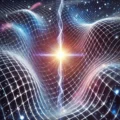Demonstrated Particle-Like Behavior of Electromagnetic Radiation.
Introduction
Arthur Compton (1892–1962) was an American physicist who studied the scattering and absorption of high-energy particles.ental forces. His discoveries, including electromagnetic induction, diamagnetism, and electrolysis, laid the foundation for much of modern physics and electrical technology.
Early Life and Education
Compton was born at Wooster, Ohio, the son of Elias Compton, Professor of Philosophy and Dean of the College of Wooster.
He was educated at the College, graduating Bachelor of Science in 1913, and he spent three years in postgraduate study at Princeton University receiving his M.A. degree in 1914 and his Ph.D. in 1916. After spending a year as instructor of physics at the University of Minnesota, he took a position as a research engineer with the Westinghouse Lamp Company at Pittsburgh until 1919 when he studied at Cambridge University as a National Research Council Fellow.
In 1920, he was appointed Wayman Crow Professor of Physics, and Head of the Department of Physics at the Washington University, St. Louis; and in 1923 he moved to the University of Chicago as Professor of Physics. He served as Chancellor of Washington University in St. Louis from 1945 to 1953.
Contributions
Compton’s work significantly advanced our understanding of the nature of light and matter. Compton’s key contributions include:
- In 1922, he discovered that X-ray quanta scattered by free electrons have longer wavelengths and, according to Planck’s relation, less energy than the incoming X-rays. The surplus energy is transferred to the electrons.
- This discovery was groundbreaking because, while the wave nature of light was well-established, the idea that light has both wave and particle properties was not readily accepted.
- In his paper, Compton derived the mathematical relationship between the shift in wavelength and the scattering angle of the X-rays, assuming each scattered X-ray photon interacts with only one electron.
- The Compton wavelength formula is: λ’ – λ = (h / mec) (1 – cosθ)
- This discovery, known as the “Compton effect” or “Compton scattering,” demonstrated the particle concept of electromagnetic radiation.
- The Compton wavelength is equivalent to the wavelength of a photon whose energy equals the rest mass energy of the particle.
- He is also known for his leadership of the Manhattan Project’s Metallurgical Laboratory.
Vision
Compton’s work provided compelling evidence for the particle nature of light, a concept crucial to the development of quantum mechanics.
Legacy
Compton’s discovery of the Compton effect solidified the understanding of light as both a wave and a particle, a concept known as wave-particle duality. His work had a lasting impact on physics. He won the Nobel Prize in Physics in 1927 for his discovery of the Compton effect, which demonstrated the particle nature of electromagnetic radiation.
Parts from Nobel Lectures, Physics 1922-1941, Elsevier Publishing Company, Amsterdam, 1965
